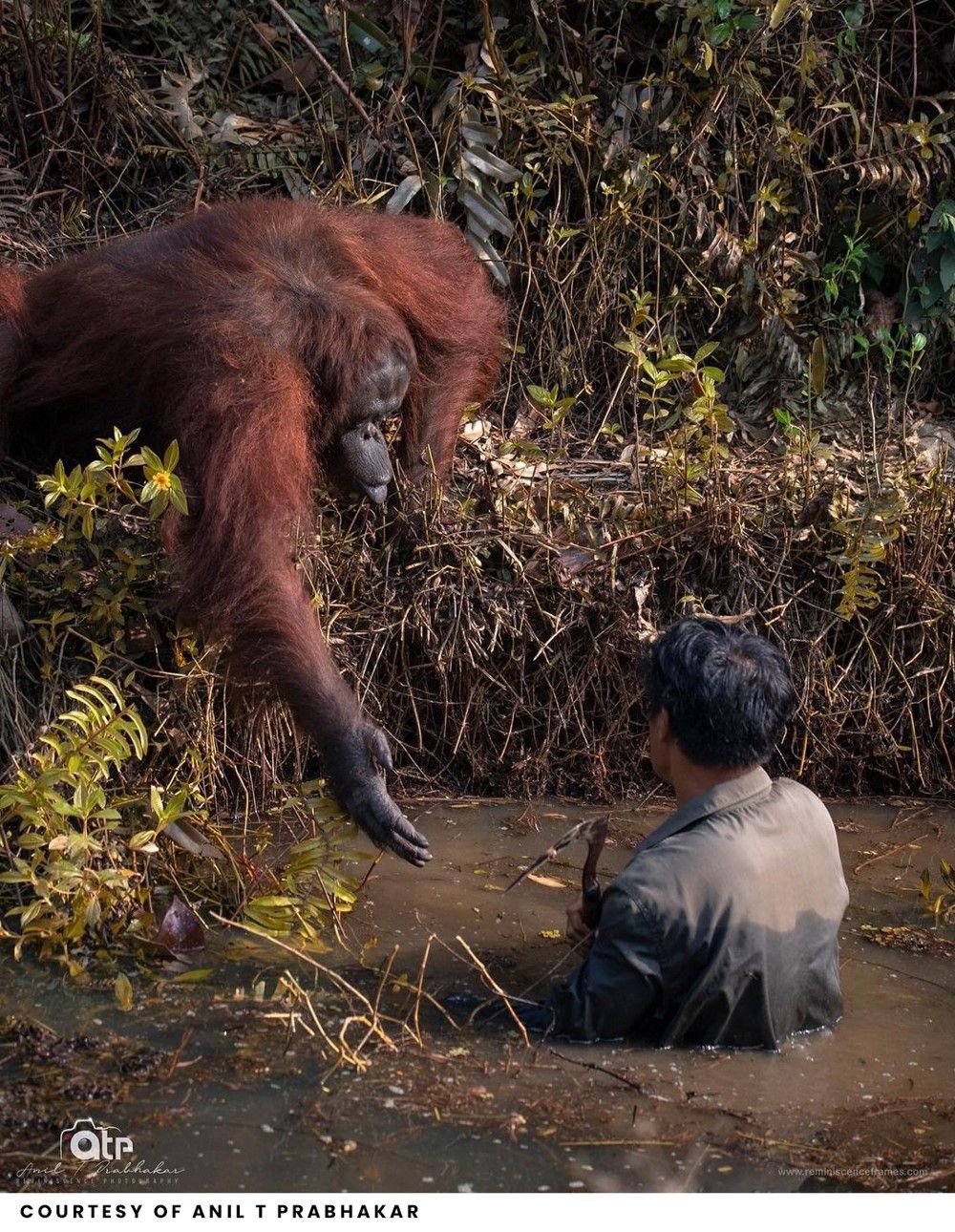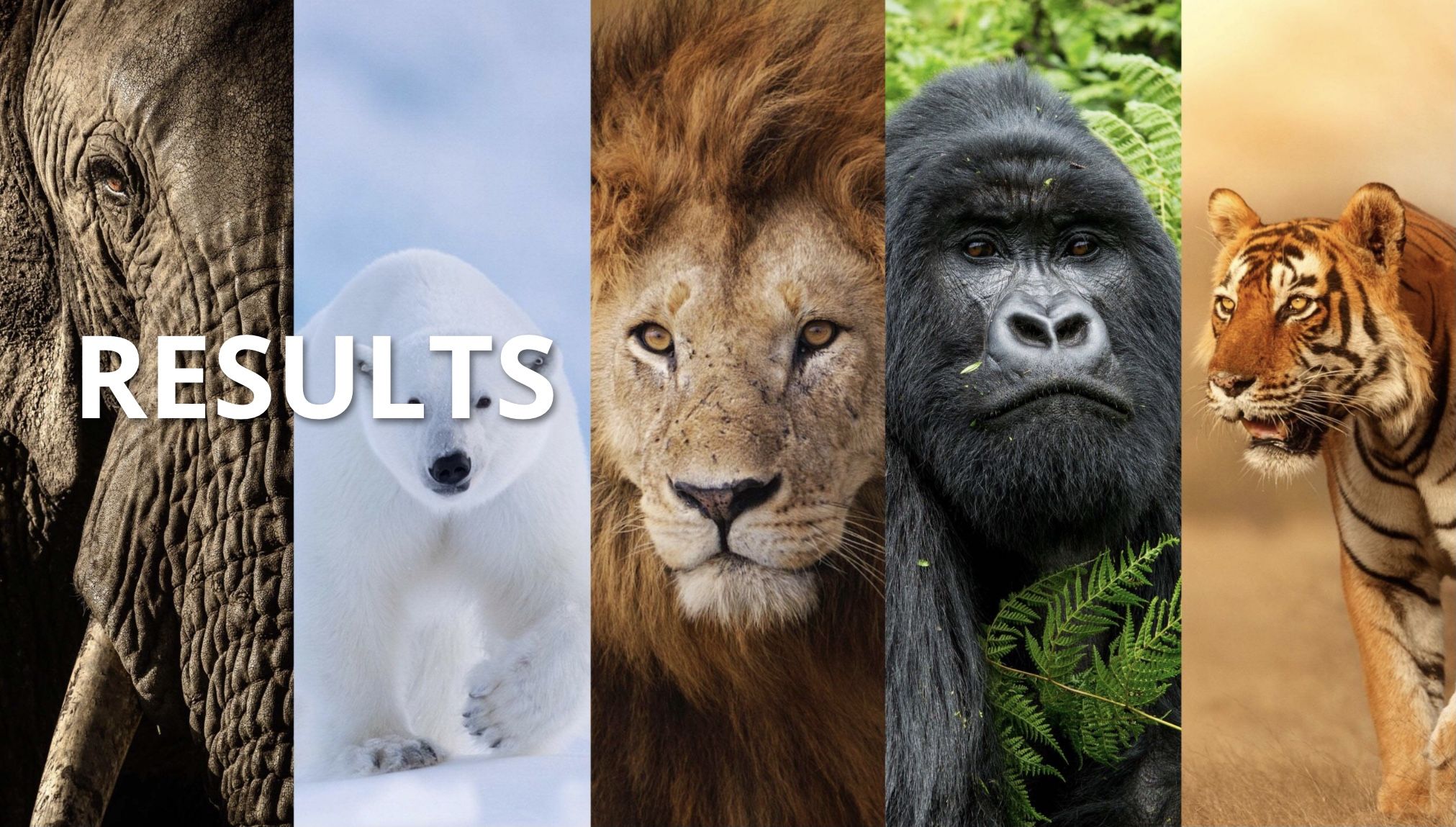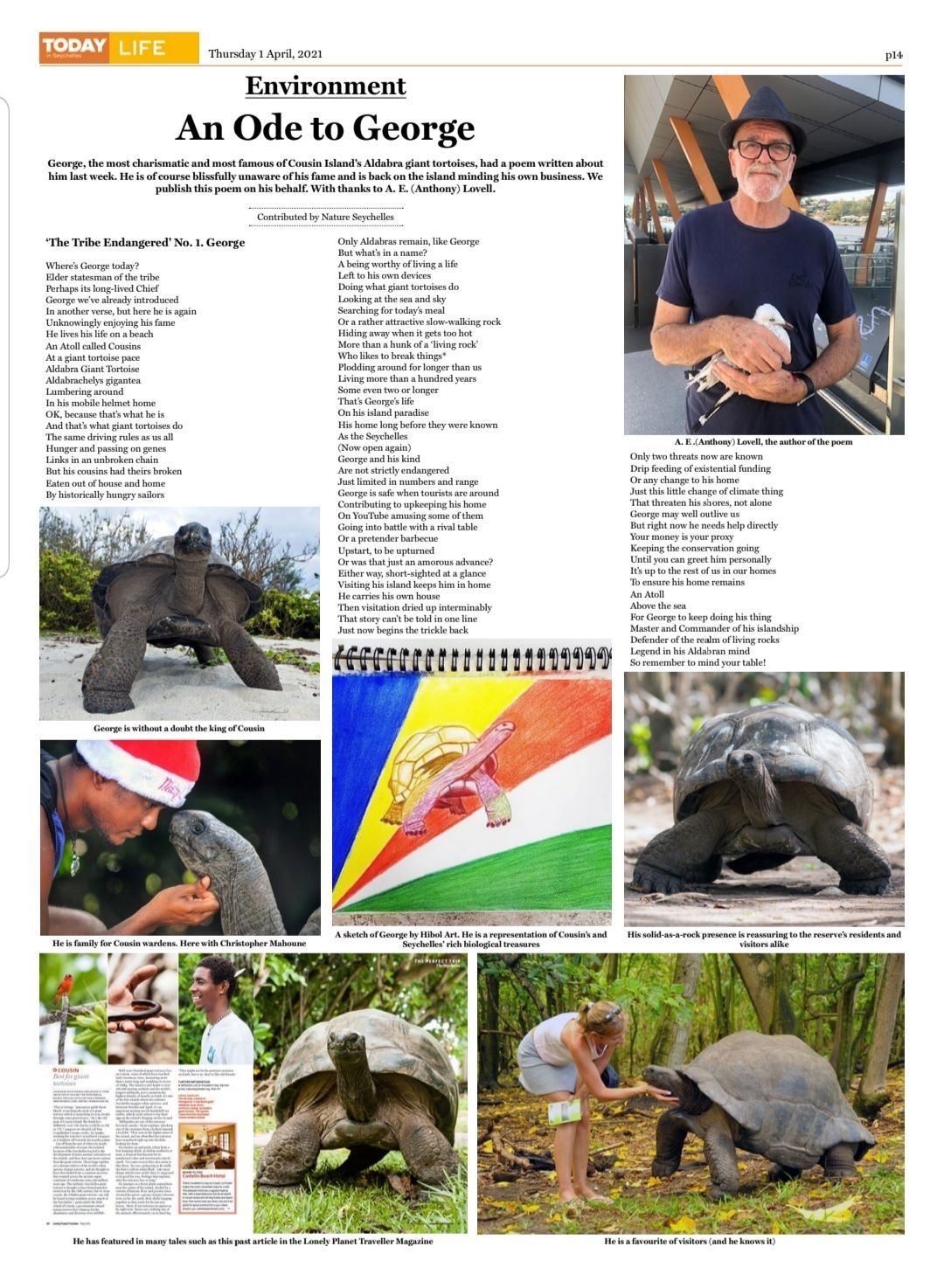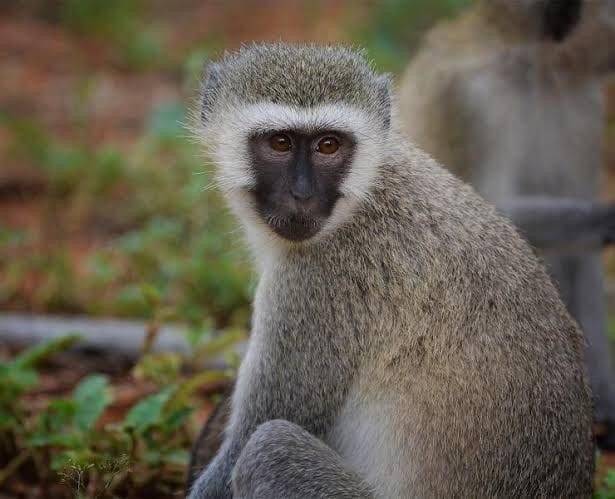

‘The Tribe Endangered’ No. 1. George
Where’s George today?
Elder statesman of the tribe
Perhaps its long-lived Chief
George we’ve already introduced
In another verse, but here he is again
Unknowingly enjoying his fame
He lives his life on a beach
An Atoll called Cousins
At a giant tortoise pace
Aldabra Giant Tortoise
Aldabrachelys Gigantea
Lumbering around
In his mobile helmet home
OK, because that’s what he is
And that’s what giant tortoises do
The same driving rules as us all
Hunger and passing on genes
Links in an unbroken chain
But his cousins had theirs broken
Eaten out of house and home
By historically hungry sailors
Only Aldabras remain, like George
But what’s in a name ?
A being worthy of living a life
Left to his own devices
Doing what giant tortoises do
Looking at the sea and sky
Searching for today’s meal
Or a rather attractive slow-walking rock
Hiding away when it gets too hot
More than a hunk of a ‘living rock’
Who likes to break things*
Plodding around for longer than us
Living more than a hundred years
Some even two or longer
That’s George’s life
On his island paradise
His home long before they were known
As the Seychelles
(Now open again)
George and his kind
Are not strictly endangered
Just limited in numbers and range
George is safe when tourists are around
Contributing to upkeeping his home
On YouTube amusing some of them
Going into battle with a rival table
Or a pretender barbecue
Upstart, to be upturned
Or was that just an amorous advance?
Either way, short-sighted at a glance
Visiting his island keeps him in home
He carries his own house
Then visitation dried up interminably
That story can’t be told in one line
Just now begins the trickle back
Only two threats now are known
Drip feeding of existential funding
Or any change to his home
Just this little change of climate thing
That threaten his shores, not alone
George may well outlive us
But right now he needs help directly
Your money is your proxy
Keeping the conservation going
Until you can greet him personally
It’s up to the rest of us in our homes
To ensure his home remains
An Atoll
Above the sea
For George to keep doing his thing
Master and Commander of his islandship
Defender of the realm of living rocks
Legend in his Aldabran mind
So remember to mind your table!
A.E.(Anthony) Lovell
FUN FACTS FRIDAY- VERVET MONKEY
1. They spend almost their entire life on the trees (arboreal animal). They are proficient climbers and jumpers.
2. They are omnivores (they eat both plants and meat). Their diet is based on leaves, buds, shoots, flowers, fruit, roots, insects, eggs, grubs and small birds.
3. They usually breed from April to June. Pregnancy in females lasts 165 days and ends with one baby.
4. They communicate through sounds and body language. A raising eyebrow is meant to be a threat to others in the troop. There are also vocalizations like crying and barking to signal different information. Wanting calls are used by mothers to attract infants while chattering signals irritation or aggression.
5. During mating season the males testicles turn bright blue, a flamboyant show to suggest their suitability as a mate.
If you want to learn more about this animal,Contact Godfreytheguide for more information.
WhatsApp/ call - +256773127086
George Kingston is an all-out outdoor person. He holds a B.A. in Political Science and an M.S. in Sustainability Science & Practices from Stanford University. His training has motivated him to advocate for greater sustainability and accessibility within outdoor activities. These days, George is working as an actor and screenwriter to depict our relationships with the natural world.
We never thought about this and here at Mojostreaming, we thank George for educating us!
We would like to hear from you. Do you have any other suggestions on what other changes can be made?